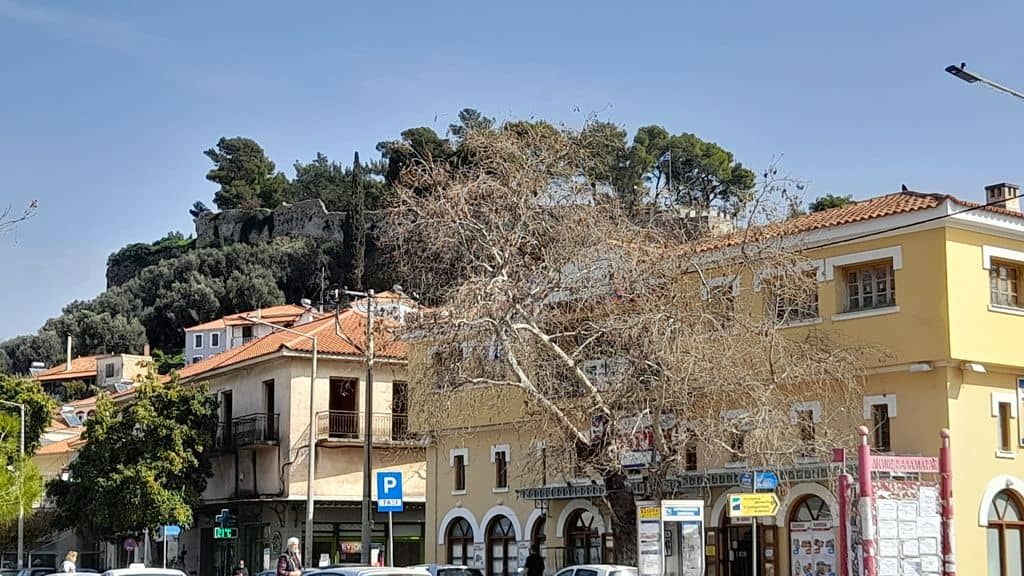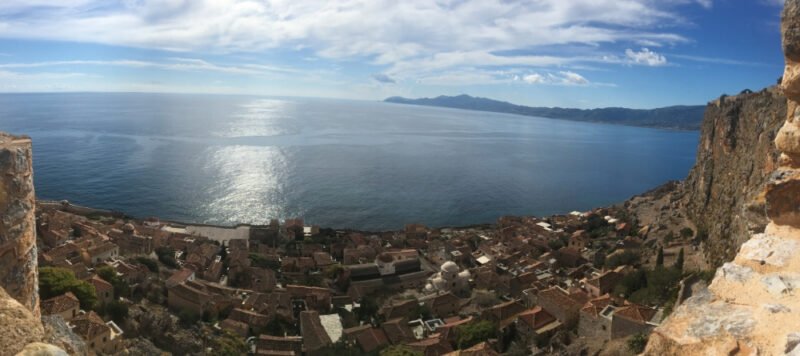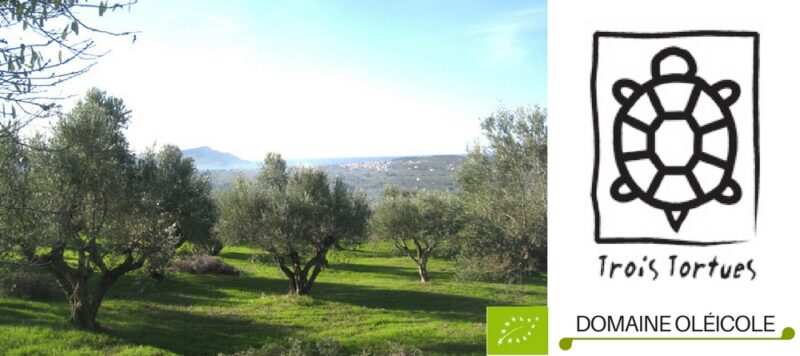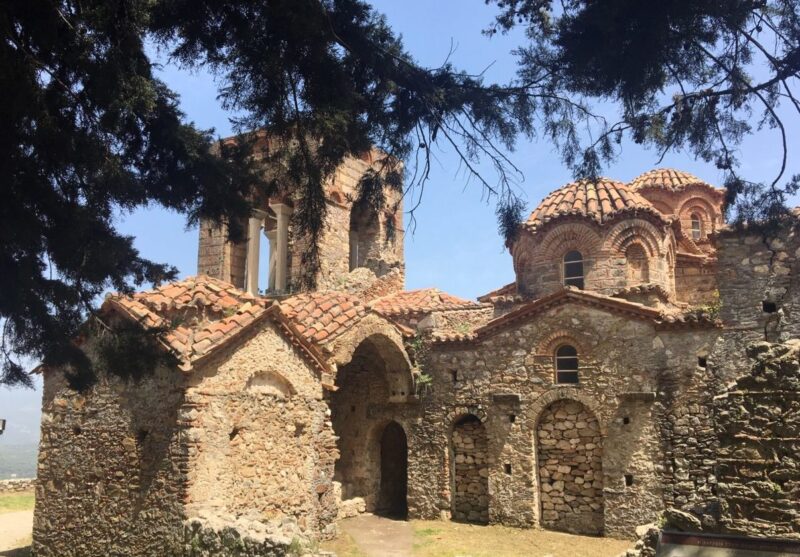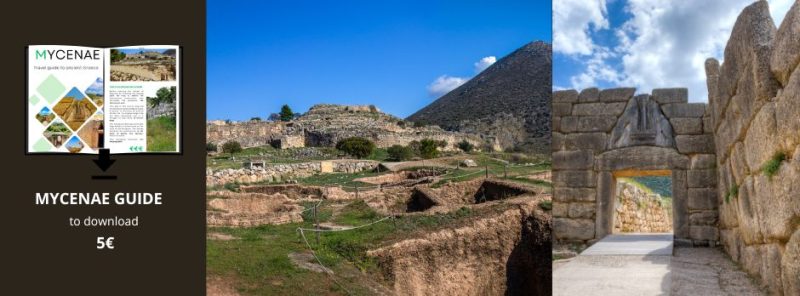When we hear about Kalamata, we think of its olives, purple, fleshy and acidulous. Did you know that Kalamata is also an important city and capital of the department of Messinia? It is a commercial and recreational port, an international airport and, above all, an ideal starting point for visiting the southwestern Peloponnese. Here is a portrait of a city that deserves to be discovered.
Kalamata, an ancient history
Antiquity
Nestled at the bottom of the homonymous gulf, at the foot of the imposing mountain of Taygetos and at the end of one of the most fertile plains of the Peloponnese, Kalamata is a city with a long history. Moreover, Homer speaks about it in the Odyssey, naming it Farai. But its current name dates from the Middle Ages and may refer to the reeds (kalamai in Greek) that line the banks of the many rivers in the region.
During the classical antiquity, Messinia was dominated by Sparta. In fact, its inhabitants were in charge of supplying this city with agricultural products, while the Spartans were training for war. They were called “eilotes” (hilotes), a word that even today means serf in Greek!
From the Middle Ages to the present day
In the Middle Ages, the region passed to the Franks who were crossing the Mediterranean for the 4th crusade. On this occasion, they also enslaved the Peloponnese (and incidentally a large part of the declining Byzantine Empire, including Constantinople). The champenois lord Geoffroi I de Villehardouin liked Kalamata so much that he built a castle there and installed his family and his knights, who came from France.
Occupied by the Ottomans since the XVth century, Kalamata is the first city of Greece liberated on March 23, 1821, two days before the official beginning of the war of independence! During the 19th century, the city experienced a second period of prosperity, thanks in particular to the construction of its commercial port.
Today, Kalamata is a city of 55 000 inhabitants. Its economic life is based on the exploitation and transformation of agricultural products, as well as on tourism.
What to visit in Kalamata?
The Kastro and the old town
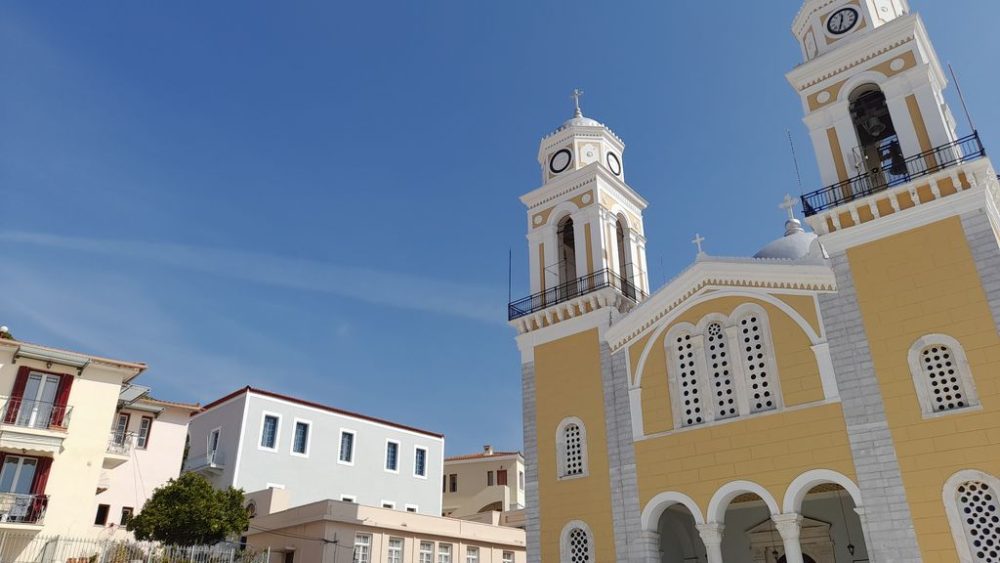
There is not much left of the medieval Villehardouin castle but the climb is worth it. You will then have a superb view of the city and the bay. The old town of Kalamata with its stalls, narrow streets and beautiful buildings develops all around.
The archaeological museum
Built on the site of the old market hall, this beautiful 18th century building unfortunately collapsed during the 1986 earthquake. The new building was inspired by its architecture. It houses collections discovered in archaeological excavations of the entire Messinian region covering a wide period, from prehistory to the medieval period and the Venetian occupation.
The market of Kalamata
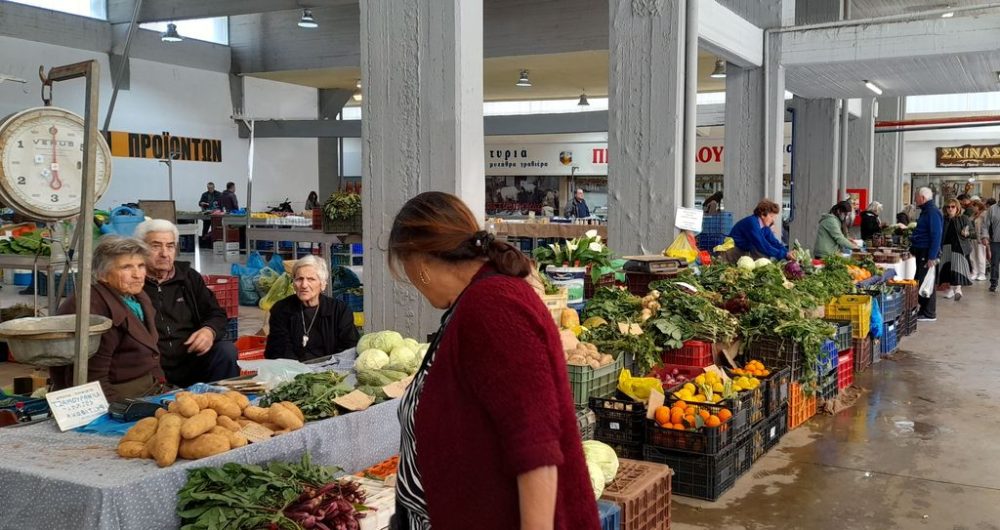
So, this colorful market takes place every Wednesday and Saturday. Producers from all over the department bring and sell their local, tasty and cheap products: fruits and vegetables of course, but also peanuts, dried figs, mushrooms, spirits… A meat market and a fish market complete this lively and busy market.
The International Dance Festival of Kalamata
This festival of contemporary and modern dance was founded in 1995. Indeed, it offers performances of Greek and foreign dance companies but also seminars, workshops… The events of the festival take place at the Dance Palace (Artemidos 124, Kalamata), the Conservatory, the Municipal Stadium and performances are also presented throughout the city.
For 2023, the festival will take place from July 14 to 23, more information and program in English on the site Kalamata Dance Festival.
The Municipal Railway Park and Museum
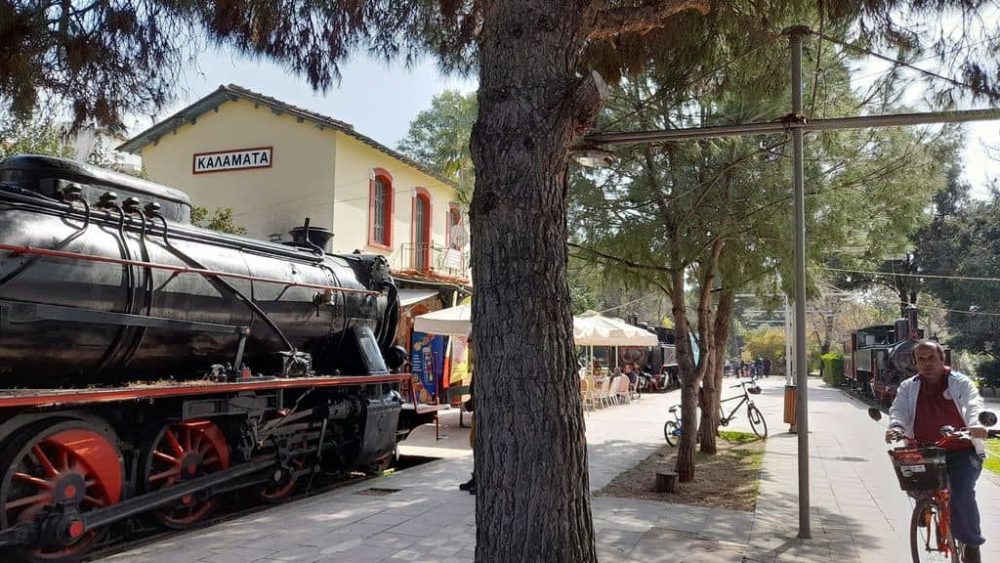
At the end of the pedestrian walkway of Aristomenous Street, at the site of the old railway station of Kalamata, there is the Railway Park-Museum. In addition, you will see old train cars and locomotives, and you can climb inside. The museum is in a very nice park for children, including a café and playground.
For more information: Kalamata Tourist Office, Aristomenous 28, tel. 2721360754, Monday to Friday from 8:00 am to 9:00 pm.
Where to eat? Where to go out?
The traditional restaurants of Nedontos Street
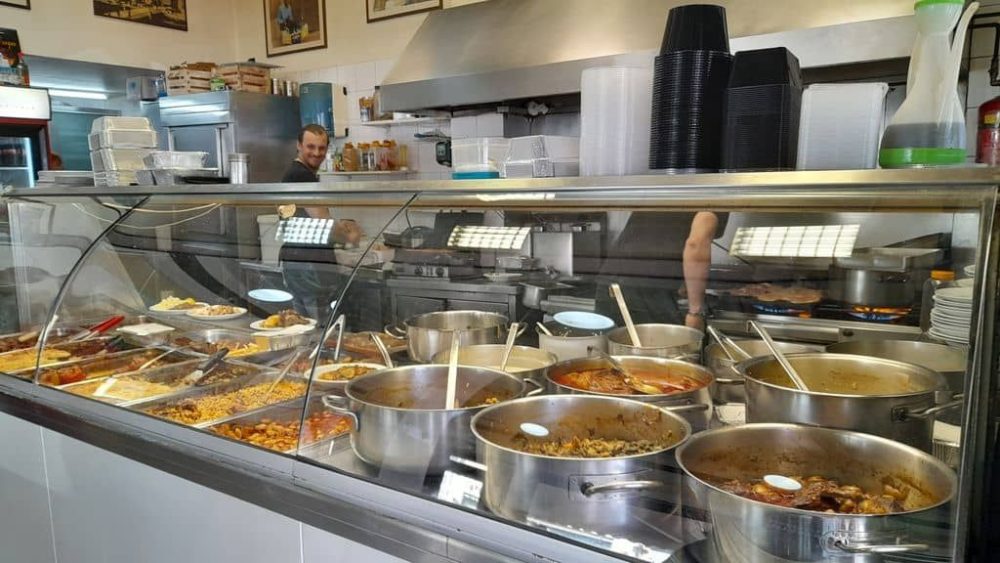
They are located on the edge of the old city, along the Nedon River. They are recognizable by the window displaying the pans with the dishes of the day. We choose at the counter, then we are served at the table. A delicious trip to the Greece of yesteryear!
The souvlaki of the old town
O Tzimis, just behind the chapel of Aghioi Apostoloi, in the old town, good traditional souvlaki to go.
The terraces of the cafes of the Aristomenous promenade
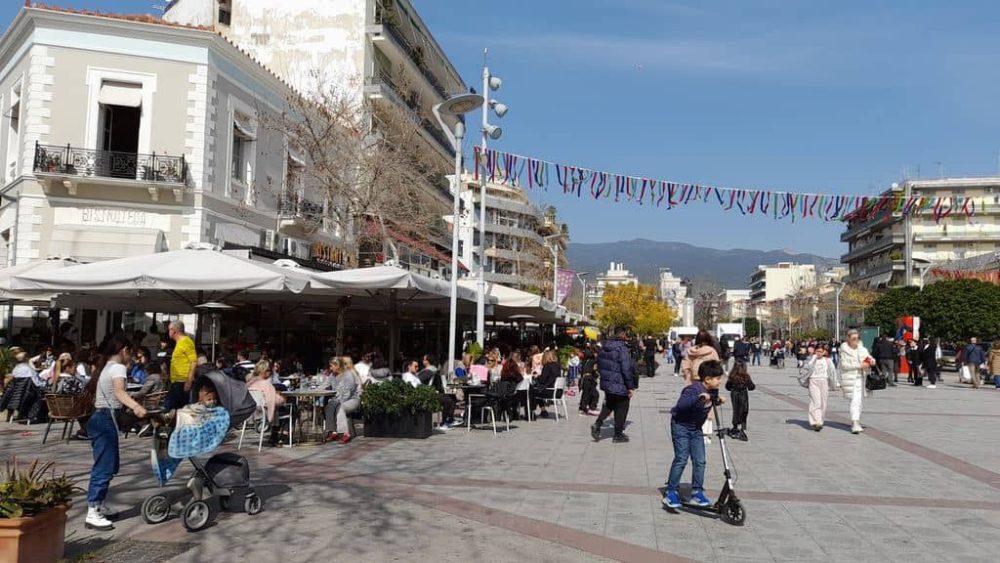
This is where the heart of the city beats, and the terraces are full at all times of the day. Yes, the locals take a break when they go shopping, this is also where they meet. Coffee in the morning, daily specials, salads and snacks for lunch, cocktails in the evening… there is something for everyone. However, if you are in the mood for quiet, these cafés are not for you!
Restaurants and cafes on the seafront
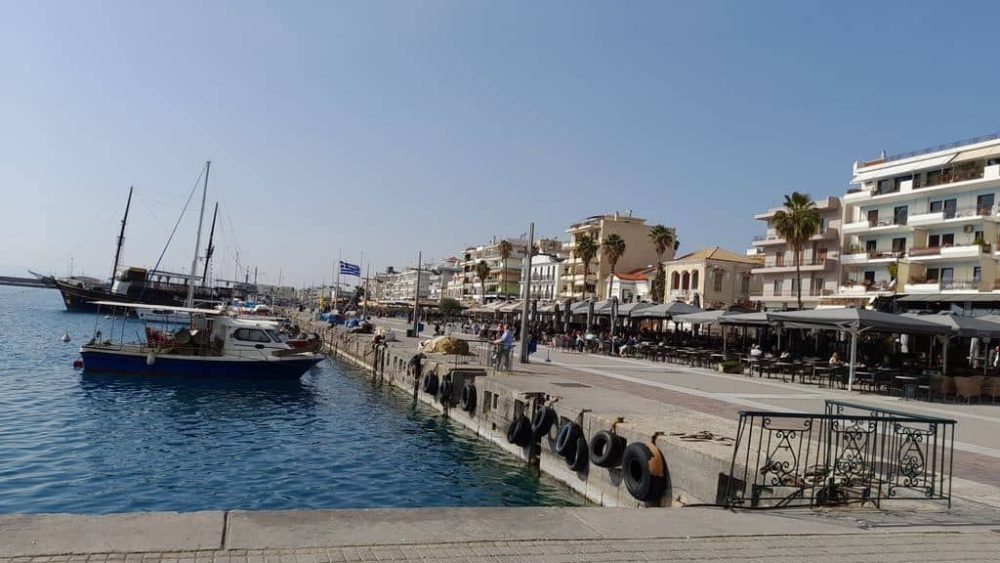
Facing the sea, along the Miaouli quay and around the Kalamata yacht club, there are cafes and restaurants open all day. A perfect place for a mezze and ouzo (from Kalamata, of course) after swimming in the sea at the nearby beach, or after the evening walk.
Local products and gifts to taste on site or to take away
Olives and olive oil of Kalamata: these are the most famous products of the region, benefiting from a PDO. Of excellent quality, you will find vacuum-packed olives and oil in cans, which is easier to take with you for travel. On the other hand, avoid buying large quantities of oil, it is forbidden on the plane.
Pasteli: These little sesame and honey bars are delicious! You will find them all over the city, in soft or crunchy versions, with sesame, peanuts or pistachios. Moreover, those of the Lambou pastry shop are excellent (3, rue Stadiou and others). Good little gift to give or to take away to prolong the taste of the most typical sweet!
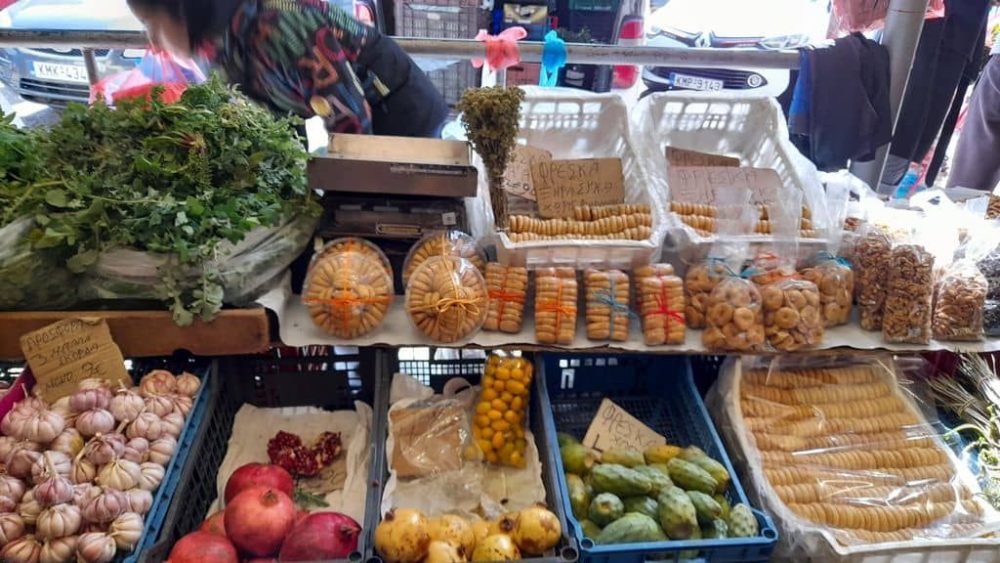
Dried figs: this is another flagship product of the region, the figs of Kalamata are famous throughout the country. In August, feast your eyes on fresh succulent figs on the country roads, the fig tree grows in Messinia like dog’s teeth!
Ouzo: Did you know that the ouzo of Kalamata is one of the most famous in Greece? Mild and fragrant, it goes deliciously with marinated fish, octopus and squid.
Pastries
Gournopoula: This is one of the most typical specialties of Messinia: suckling pig cooked slowly in its crust. A delight to be savored without fail! You can find them in the shops of Kalamata, in the taverns of the villages. Gournopoula is also sold at all summer panigyris (local patronal festivals).
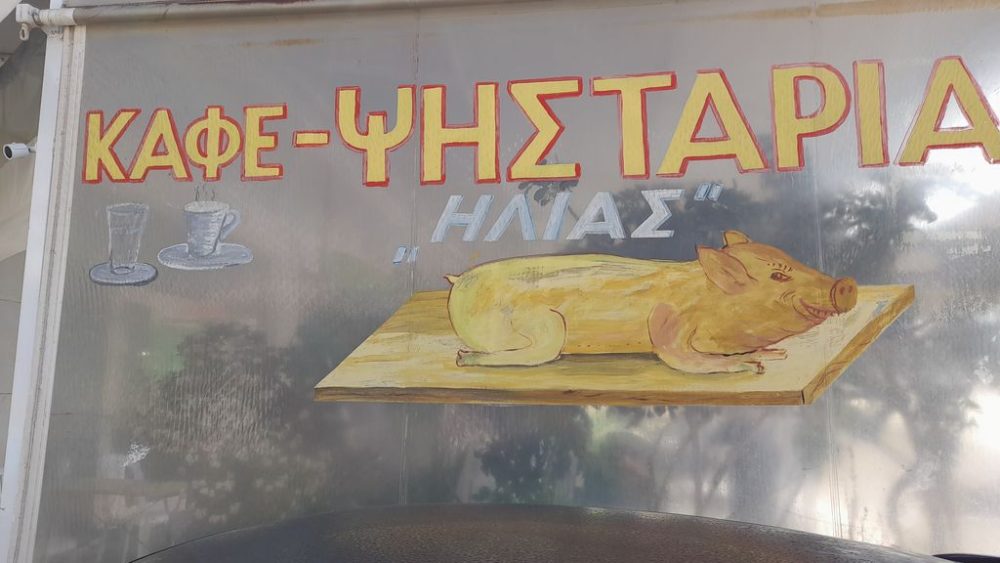
Diplomas: These are cakes made of fried egg dough, rolled into a cylinder. Airy and crunchy, topped with honey and sprinkled with nuts, diplomas are never missing from parties, weddings and baptisms. So, are you ready to go? You can then taste them at Athanassiou’s pastry shops (Stadiou and Nedontos and others).
How to get to Kalamata?
By air :
You will find direct flights to Kalamata from Paris, Athens, Geneva and all major European cities with a travel agency There are more and more connections. The rental cars are on the airport parking lot. Convenient!
By road :
Kalamata is located 250km from Athens by freeway, so count on a 2h30 drive.
If you come by boat from Italy, count 220 km from Patras; take the direction Pyrgos-Kyparissia, then the E55. On the other hand, there is no highway on a part of the route.
Moreover, if you do not have a car on the spot, we advise you to use this comparison website of car rental companies.
By bus :
From Athens (KTEL bus station of Kifissos) there are several buses per day. You can also book your tickets directly on the KTEL Messinias website or on the spot.
There are also connections with Patras, Thessaloniki, Ioannina, Sparta and buses that serve the county.
Getaways in Kalamata and surroundings
Messinia is full of hidden treasures. A still preserved and welcoming region to discover!
Here are some interesting activities on Get Your Guide that we have spotted (but not tested), they are in English:
Evi S.
